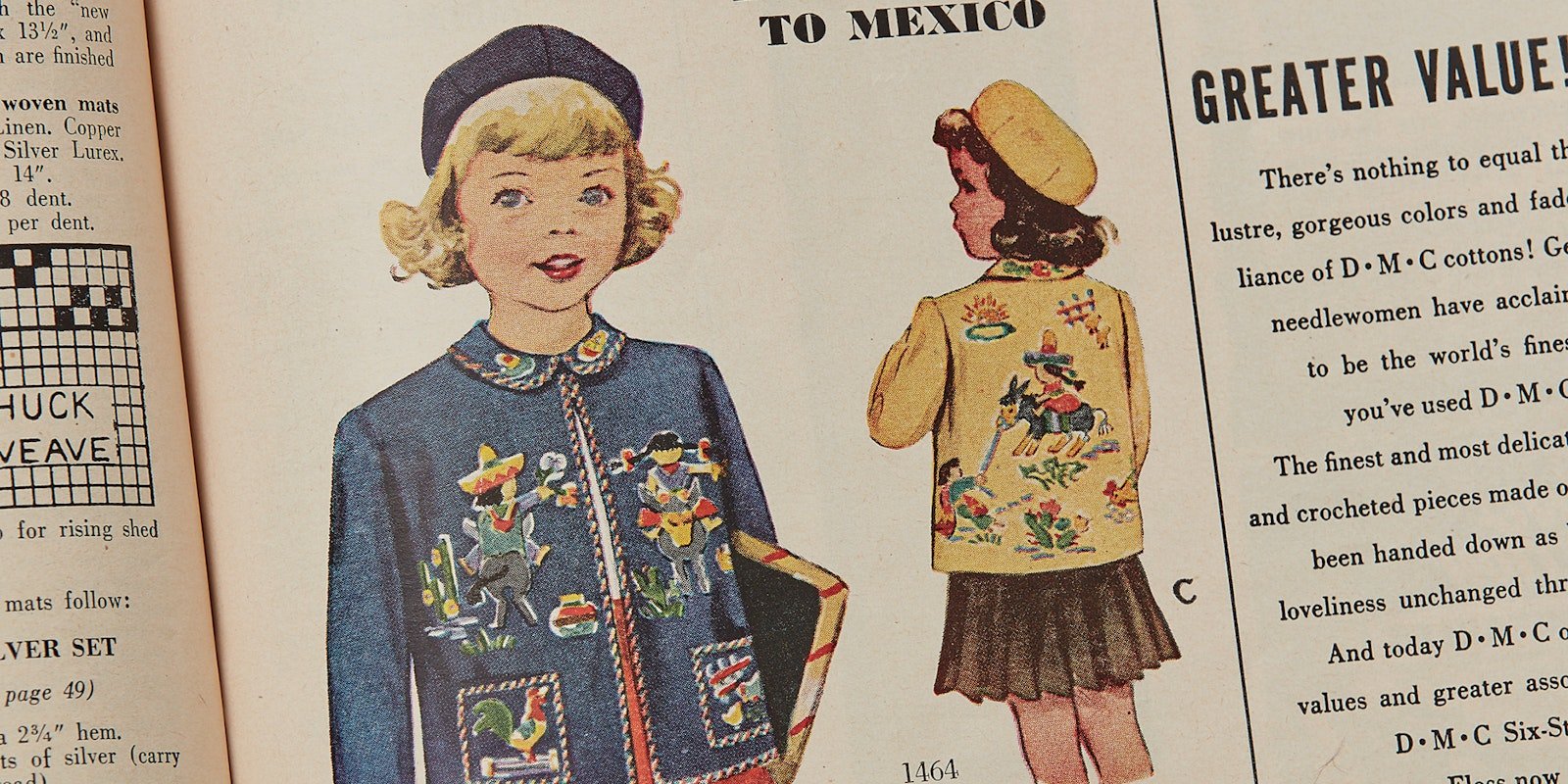Colorful embroidered Mexican souvenir jackets offered both real and imagined holidays to Mexico during the late 1940s and early 1950s. Travelers bought jackets as souvenirs of sunny, exotic Mexico. Stay-at-homes discovered imported Mexican jackets for sale at American department stores. Needleworkers with a creative flair sewed and embroidered their own Mexican jackets using McCall patterns.
Hand-embroidered and appliquéd Mexican designs decorated these blazer-style souvenir jackets that were machine-sewn of intense red, green, blue, and sometimes white or black wool fabric. Playful scenes of everyday life in Mexico featured such figures as the donkey (burro), cactus (nopales), gourds (guajes), and various clothing styles worn by indigenous Mexican people. Wool or cotton embroidery thread outlined and filled designs using herringbone, feather, detached chain, bullion, back, and stem stitches. Blanket or running stitches attached woolen fabric appliqués, sometimes with added sequins for a bit of bling. Blanket or cross-stitches finished raw edges.
 The iconic Mexican duo of el charro and la china poblena appliquéd and embroidered on the back of a wool Mexican souvenir jacket. Collection of Susan Strawn
The iconic Mexican duo of el charro and la china poblena appliquéd and embroidered on the back of a wool Mexican souvenir jacket. Collection of Susan Strawn
Such embroidery stitches were well established in Mexico over centuries of practice, a heritage dating back to the sixteenth-century Spanish conquest. Spanish nuns in particular had taught young Mexican girls to embroider samplers, fine altar cloths, and apparel for clerics and wealthy landowners. Embroidery continues as a popular embellishment for traditional-style contemporary Mexican clothing, household textiles, and souvenirs.
 Front of the jacket. Collection of Susan Strawn
Front of the jacket. Collection of Susan Strawn
Care to take a trip around the world? This article and others that travel can be found in the July/August 2017 issue of PieceWork.
Also, remember that if you are an active subscriber to PieceWork magazine, you have unlimited access to previous issues, including July/August 2017. See our help center for the step-by-step process on how to access them.
Susan Strawn studies cultural and historical textile traditions and fashion history. She is professor emerita of Apparel Design and Merchandising at Dominican University (Chicago), author of Knitting America: A Glorious History from Warm Socks to High Art (St. Paul, Minnesota: Voyageur, 2007), and a contributing editor to PieceWork. She lives on Bainbridge Island, Washington.
Rogelia Lily Ibarra is an associate professor of Spanish language and literature in the Department of Modern Foreign Languages at Dominican University (Chicago). She received her Ph.D. in Hispanic literature at Indiana University, Bloomington. Her primary research focus is nineteenth-century Hispanic women’s narratives and representations of nation and nationalism. She enjoys collaborating in interdisciplinary research. She has published on other topics related to Mexican popular culture, and her work has been published in journals such as Hispania, Fashion, Style and Popular Culture, The Popular Culture Studies Journal, and Encyclopedia of Ethnic Clothing in the United States.
Originally published November 29, 2021; updated February 3, 2023.

